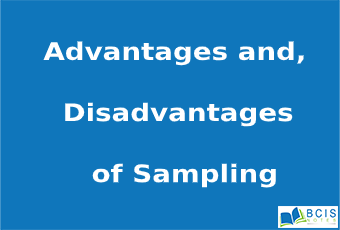
Advantages and disadvantages of sampling: (Sample methods versus census methods)
The advantages and disadvantages of sampling are cost-effective, great speed, good scope, and on the other hand sampling errors, needs of qualified experts.
The advantages and disadvantages of sampling have been mentioned below:
Advantages of sampling:
The following are some advantages of sampling as compared to census methods.
- Reduce cost: Sampling is done to select the representative sample of the population to estimate the population parameters. It requires a small cost to collect the sample as compared to the census methods.
- Greater speed: Through sampling, the researcher can collect data and analyze the data to study the population information in a very short time as compared to census methods.
- Greater scope: The census method cannot be always feasible to study the population but the sampling method can be done at low cost, in a short time with higher accuracy so it has a very high scope for the survey method.
- Greater accuracy: The size of non-sampling error is significantly lower in sampling methods as compared to the census. The highly qualified personnel can be employed in the sampling to get the high accuracy of the finding.
Disadvantages of sampling:
The following are some disadvantages of sampling as compared to census methods.
- If the sampling procedure is not perfect then the error may introduce in the findings.
- Sampling error is present in sampling methods.
- If the information is required for each and every unit of the population then sampling will not be a useful method.
- It needs the services of highly qualified experts in the study.
You may also like: Multistage sampling, Sampling & Non-sampling Error

Leave a Reply